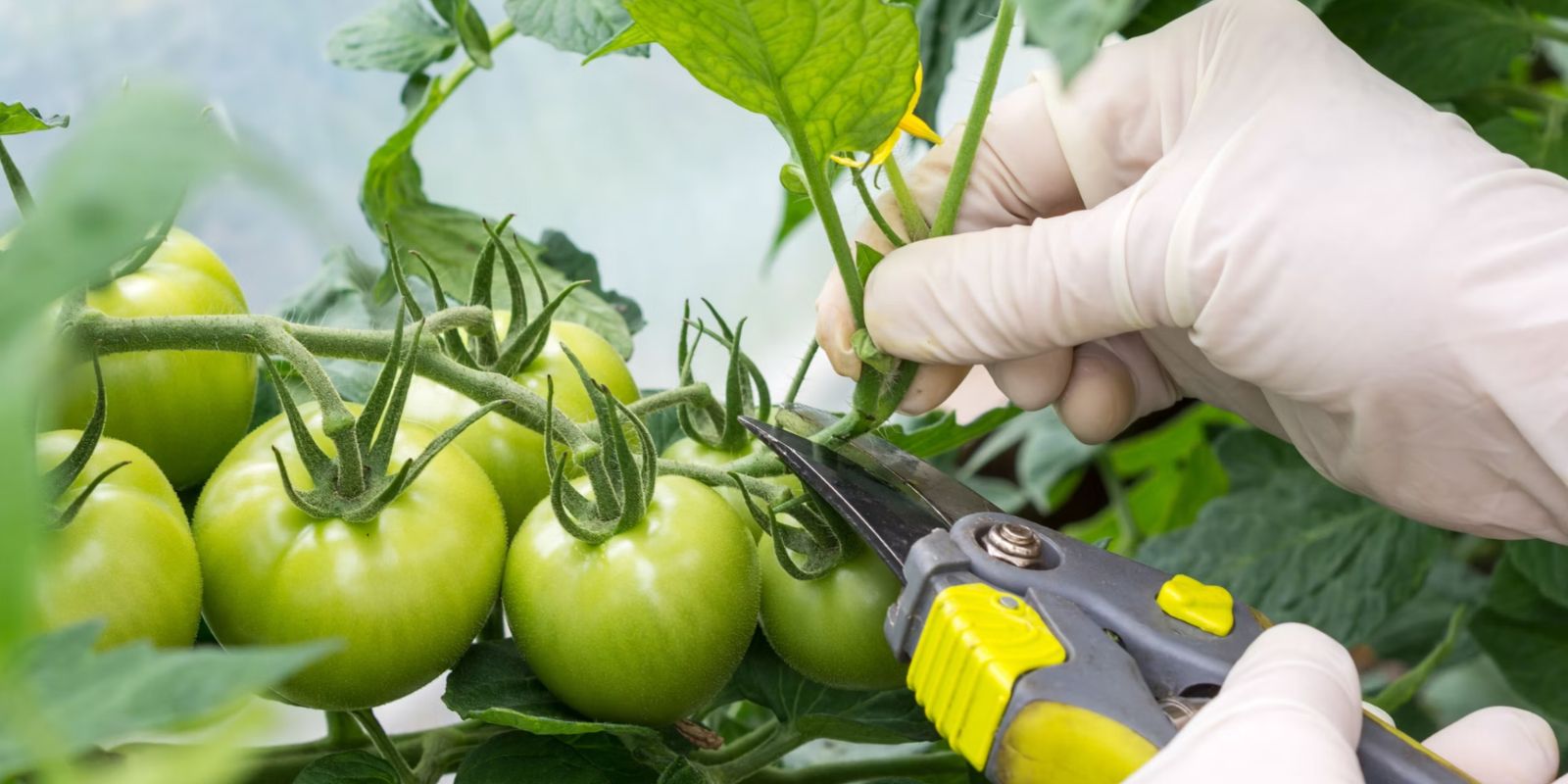Pruning tomato plants is a critical practice for any gardener aiming to maximize yield and ensure healthy plant growth. Whether you’re a novice gardener or an experienced grower, mastering the art of pruning can significantly boost your tomato harvest. This guide will walk you through everything you need to know to effectively prune your tomato plants and enjoy a bountiful crop.
Why Prune Tomato Plants?
Pruning tomato plants is essential for several reasons:
- Improved Air Circulation:
- Pruning helps to open up the plant, improving airflow between the leaves. This reduces the risk of fungal diseases such as powdery mildew and blight.
- Enhanced Light Penetration:
- By removing excess foliage, you allow more sunlight to reach the lower parts of the plant, promoting better fruit development and ripening.
- Increased Fruit Production:
- Pruning directs the plant’s energy towards fruit production rather than unnecessary foliage growth, leading to higher yields of better-quality tomatoes.
- Easier Harvesting:
- A well-pruned tomato plant is easier to manage and harvest from, reducing the risk of damaging the fruit or plant.
- Reduced Pest Problems:
- Fewer dense areas of foliage mean fewer hiding spots for pests, which can help keep your plants healthier.
Types of Tomato Plants
Before diving into pruning techniques, it’s important to understand the two main types of tomato plants:
- Determinate Tomatoes:
- These plants grow to a certain height and then stop. They produce fruit all at once, usually over a 1-2 week period. Pruning determinate varieties is minimal, focusing mainly on removing dead or diseased foliage.
- Indeterminate Tomatoes:
- These plants continue to grow and produce fruit throughout the growing season until frost. They require more extensive pruning to manage their size and shape, allowing for better airflow and increased fruit production.
Pruning Tools and Preparation
Having the right tools is crucial for effective pruning:
- Pruning Shears:
- Sharp, clean pruning shears are essential for making precise cuts and preventing damage to the plant.
- Gloves:
- Garden gloves protect your hands from thorns, sap, and dirt.
- Disinfectant:
- Use a disinfectant or rubbing alcohol to clean your pruning tools before and after use to prevent the spread of diseases.
Steps for Pruning Tomato Plants
- Identify the Main Stem:
- The main stem is the primary trunk of the tomato plant. For both determinate and indeterminate varieties, focus on maintaining a strong, healthy central stem.
- Remove Suckers:
- What Are Suckers?
- Suckers are the small shoots that grow in the leaf axils (the space where the leaf meets the stem). They can divert energy from the main stem and produce excessive foliage.
- How to Remove:
- Pinch off suckers when they are small, ideally less than 4 inches long. Use your fingers or pruning shears to make clean cuts. For larger suckers, use clean shears to prevent leaving stubs.
- Trim Lower Leaves:
- Why Trim?
- Lower leaves and branches that touch the ground can become a source of disease and attract pests.
- How to Trim:
- Remove the lowest leaves and branches, especially those that are yellowing or dying. Ensure you do this carefully to avoid damaging the plant’s structure.
- Prune Dead or Diseased Foliage:
- Identifying Problems:
- Look for leaves and branches that are discolored, wilted, or show signs of disease.
- Pruning Method:
- Cut away all affected parts, ensuring you dispose of them properly to prevent the spread of disease. Clean your tools after each cut to avoid contamination.
- Encourage Strong Growth:
- Indeterminate Varieties:
- Maintain a single central leader or main stem by removing side shoots and suckers. This helps the plant focus its energy on producing fruit rather than excessive foliage.
- Determinate Varieties:
- Limit pruning to shaping the plant and removing any unwanted growth. Prune lightly to avoid reducing the plant’s productivity.
Pruning Schedule and Maintenance
- Early Season Pruning:
- Start pruning when the plant is young, focusing on shaping and removing suckers. This will help establish a strong structure early on.
- Mid-Season Pruning:
- Continue to prune throughout the growing season, removing new suckers and any diseased or damaged foliage. Regularly check for new growth and maintain the plant’s shape.
- Pre-Harvest Pruning:
- As the plant begins to fruit, remove any additional foliage that may be shading the tomatoes. This encourages better ripening and access to sunlight.
- End of Season Pruning:
- Before the first frost, prune away any remaining dead or diseased foliage. Harvest any remaining fruit and prepare the plant for winter or the end of the growing season.
Common Mistakes to Avoid
- Over-Pruning:
- Avoid removing too much foliage at once, as this can stress the plant and reduce overall productivity. Prune gradually and observe the plant’s response.
- Improper Cuts:
- Make clean cuts at a 45-degree angle to prevent water from collecting in the wounds. Avoid leaving stubs, as these can become entry points for diseases.
- Ignoring Disease:
- Always address signs of disease promptly and clean your tools between cuts to prevent the spread of infections.
Conclusion
Pruning tomato plants is an essential skill for any gardener seeking to maximize their harvest and maintain healthy, productive plants. By following the steps outlined in this guide, you can effectively manage your tomato plants, boost fruit production, and enjoy a more successful growing season. Remember, successful pruning requires practice and observation, so take the time to learn and adapt your techniques as needed.
Transform your tomato-growing experience and share your pruning successes with fellow gardeners. Happy pruning and may your tomato harvest be abundant! 🍅✂️ #TomatoPruning #GardenTips #TomatoHarvest #OrganicGardening #PruningGuide #GardeningSuccess #BoostYourHarvest

